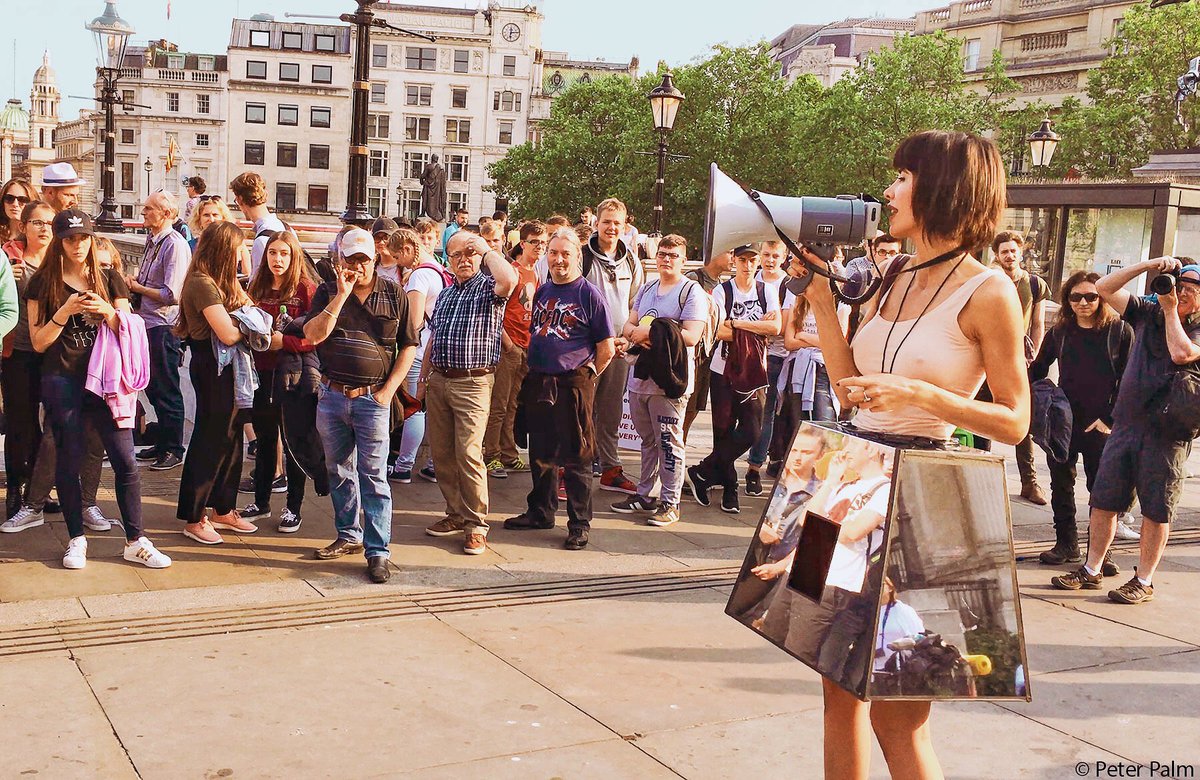Throughout our art history course, we learned about many female artists. Some of the themes that we come across are the patriarchy, feminism, and the concept of the “male gaze” vs the “female gaze”. Before I took this class, I was unable to name any female artists right away. However, now I am able to choose five female artists that I believe share a common theme throughout their work.
One of the first female artists would be Barbara Kruger. She is an postmodernist artist born in Newark, New Jersey. Her earliest artwork began in 1969, where she began by making large wall hangings with various materials. These materials included beads, feathers, sequins and beads. She began to pick up photography in 1977. Two years later, she published a book named “Picture/Readings”, which was a collection of works that captured concept ideology and female consciousness. By the early 1980s, she began to be known for her signature agitprop artwork. This included large black and white photos that were cropped and covered with blocks of text that contain feminist or ironic statements. Her artwork touches on the feminist theme, where she places ironic or empowering statements on portraits of women.
Untitled, 1989
Another female artist who incorporated feminism into her artwork was Cindy Sherman. She was born in New Jersey, and used her photography to convey the instability of gender. Most of her artwork consisted of using herself as the subject of the photographs, often depicting female stereotypes. She used her artwork to challenge society’s gender roles. She created a series of photographs that she titled as “Untitled”. This series depicts the stereotypical roles that women had to play.

Untitled, 1977
Another female artist who was best known for her performance art was Marina Abramovic. She was born in Yugoslavia. Her most famous piece of work was titled ‘Rhythm 0”, and it is considered to be one of the most terrifying works of art in history. This piece was a six-hour long performance art done in Studio Morra, Naples. It consisted of Marina standing completely still and emotionless, similar to Yoko Ono’s famous performance art titled “Cut Piece”. She allowed the audience to do whatever they wanted to her. This was meant to comment on society and the way patriarchy enables men to dehumanize women.
Rhythm 0, 1974
A lesser-known and extremely controversial performance artist is Milo Moire. She is a Swiss conceptual artist who is known for her nude performances and the use of her body in her art. She has an Art Academy background and a master's degree in Psychology. Her well-known artwork include pieces titled "PlopEgg", "The Scriptsystem No. 2", and "Mirror Box". Plopegg was performed at Art Cologne in 2014, when she expelled paint filled eges from her vagina onto canvas. It created a abstract art piece that has been compared to a womb and a Rorschach test. She stated that "To create art, I use the original source of femininity - my vagina". Her most controversial piece was called "Mirror Box", for which she got arrested for while performing. She would walk around various European cities with a large mirrored box covering her body. She invited strangers to stick their hands in the box, and touch either her breasts or vagina for 30 seconds. She stated it was based on feminism and the reinforcement of consent. By using a mirror, the audience that volunteer to touch her are forced to view themselves and the others watching them.

Mirror Box
Shirin Neshat is another feminist female artist known for her works in photography and videography. She is an Iranian artist who lives in New York City. Her artwork focuses on femininity and masculinity, and the contrasts between Islam and the West. One famous piece of hers is a video titled "Turbulent" done in 1998. It depicts a woman and man split into two different sides of film. The man is singing an Iranian folk song on a well-lit stage, surrounded by a captivated audience. On the other side, the woman is singing similar to a siren. She sings and creates a sad eerie rhythm on a dark stage, with no audience watching her. This comments on gender roles, specifically in Islamic society. She uses the piece to show how different women and men are treated in society, and how a woman's pain is often in secret and unacknowledged.

Turbulent, 1998
No comments:
Post a Comment